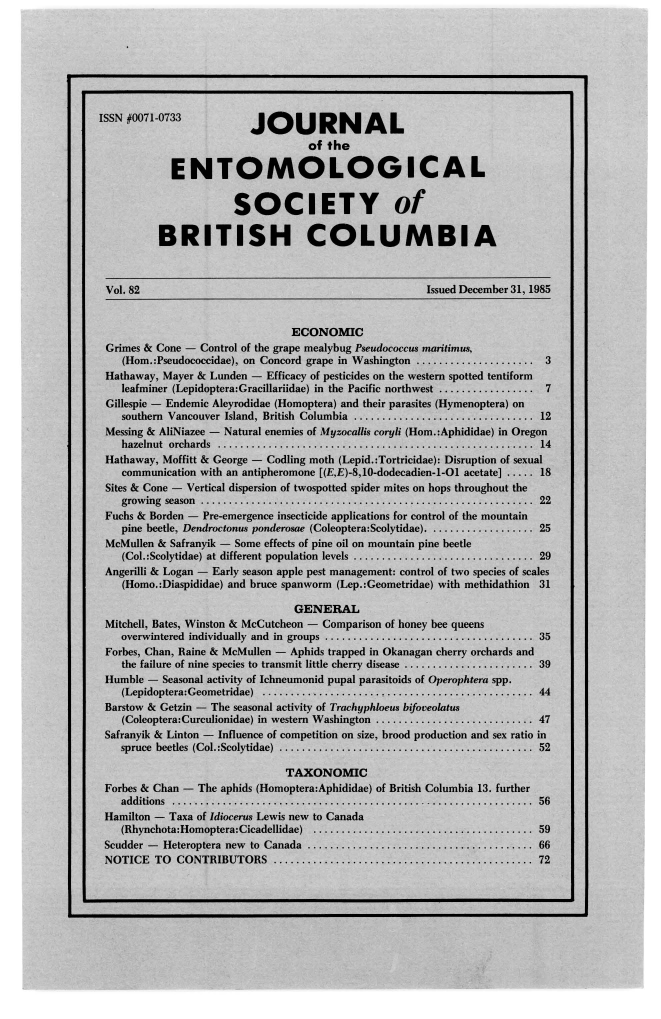Some effects of pine oil on mountain pine beetle (Col.: Scolytidae) at different population levels
Keywords:
mountain pine beetle, Coleoptera, ScolytidaeAbstract
Two formulations of pine oil (BBR2 and Norpine 65) were tested for effectiveness in preventing attacks by mountain pine beetle and reducing brood production at different population levels on lodgepole pine trees. Pheromone-baited trees sprayed with BBR2 had a lower attack intensity than baited check trees and a lower brood success than either baited check trees or baited trees sprayed with Norpine 65. Only at a low population level was attack intensity reduced by both pine oil treatments. The proportion of attacked trees within 10m of the treated trees was lower in low than in high populations but showed no difference among treatments.References
Nijholt, W.W. and L.H. McMullen. 1980. Pine oil prevents mountain pine beetle pine beetle attack on living lodgepole pine trees. Can. For. Serv. Bi-monthly Res. Notes 36:1-2.
Nijholt, W.W., L.H. McMullen, and L. Safranyik. 1981. Pine oil protects living trees from attack by three bark beetle species, Dendroctonus spp. (Coleoptera: Scolytidae). Can. Ent. 113: 337-340.
Nijholt, W.W. 1980. Pine oil and oleic acid delay and reduce attacks on logs by ambrosia beetles (Coleoptera: Scolytidae). Can. Ent. 112:199-204.
Downloads
Published
Issue
Section
License
Authors who publish with the Journal of the Entomological Society of British Columbia agree to the following terms:
-Authors retain copyright and grant the journal right of first publication with the work simultaneously licensed under a Creative Commons Attribution License that allows others to share the work with an acknowledgement of the work's authorship and initial publication in this journal.
-Authors are able to enter into separate, additional contractual arrangements for the non-exclusive distribution of the journal's published version of the work (e.g., post it to an institutional repository or publish it in a book), with an acknowledgement of its initial publication in this journal.
-Authors are permitted and encouraged to post their work online (e.g., in institutional repositories or on their website) prior to and during the submission process, as it can lead to productive exchanges, as well as earlier and greater citation of published work (See The Effect of Open Access).


